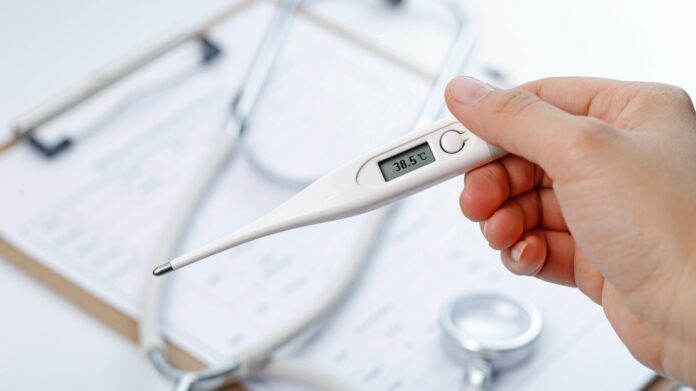Many think the average body temperature is always 98.6 degrees Fahrenheit, but that’s false. A recent study by scientists at Stanford Medicine of Stanford University showed that what’s normal for body temperature can be different for each person. It depends on how old you are, whether you’re male or female, how tall you are, and how much you weigh. And it can even change during the day.
For example, in the morning, an 80-year-old man who is tall and underweight might have a body temperature nearly 1 degree lower than a short, or having more weight 20-year-old woman does in the afternoon.
Julie Parsonnet, MD, professor of medicine and epidemiology and population health, and the George DeForest Barnett Professor in Medicine, said, “Most people, including many doctors, still think everyone’s normal temperature is 98.6 F. What’s normal depends on the person and the situation, and it’s rarely as high as 98.6 F.”
The researchers believe that detecting when someone’s temperature is not in their usual range could be valuable in identifying illnesses and starting treatment sooner.
In recent years, researchers led by Parsonnet discovered that the average body temperature in the U.S. has been gradually decreasing, dropping by about 0.05 degrees Fahrenheit per decade since the 1800s. This change is likely due to improved health and living conditions that reduce inflammation. Nowadays, the average body temperature is closer to 97.9 degrees Fahrenheit.
The commonly cited 98.6 degrees Fahrenheit standard comes from data collected in 1868 by German physician Carl Reinhold August Wunderlich. He took over a million temperature readings from about 25,000 patients, noting variations based on gender, age, and the time of day. However, the general population has fixated chiefly on the average of 98.6 degrees.
Fahrenheit, ignoring the broader range of temperatures he observed. Catherine Ley, the senior research scientist leading the study, points out that relying on this single average has created an inaccurate division between what’s considered ‘normal’ and ‘abnormal’ body temperature.
The researchers looked at 618,306 oral temperature readings from adult patients at Stanford Health Care between 2008 and 2017. They considered age, sex, weight, height, BMI, medications, and health conditions.
They used a computer program to identify medical conditions and medications linked to excessively high or low temperatures to ensure illnesses didn’t skew the results. Visits with these conditions were removed, leaving patient data without these issues.
From the remaining data, they found that average body temperatures for adults can range from 97.3°F to 98.2°F, with an average of 97.9°F.
They also found that men generally have slightly lower temperatures than women; temperatures drop with age and height and increase with weight. The time of day also matters; temperatures are more relaxed in the morning and warmer around 4 PM.
The combination of age, sex, height, weight, and time of day accounted for 25% of temperature differences among people. Other factors like clothing, activity level, menstrual cycle, measurement error, weather, and even what you eat and drink can also affect body temperature.
Personalized temperature standards could improve the usefulness of body temperature as a vital sign, according to Parsonnet. She shared an example of her old mother-in-law, who had a severe heart infection. However, her temperature never reached the conventional fever threshold (usually over 100.0°F or 100.4°F). If her temperature had been evaluated individually, it might have detected the illness sooner.
In the future, researchers could explore custom definitions of fever and see if having a consistently higher or lower average temperature affects how long people live.
Parsonnet emphasized the potential to learn more about temperature because a wealth of temperature data is available.
Journal Reference:
- Catherine Ley, Frederik Heath, et al., Defining Usual Oral Temperature Ranges in Outpatients Using an Unsupervised Learning Algorithm. JAMA Internal Medicine. DOI: 10.1001/jamainternmed.2023.4291.
